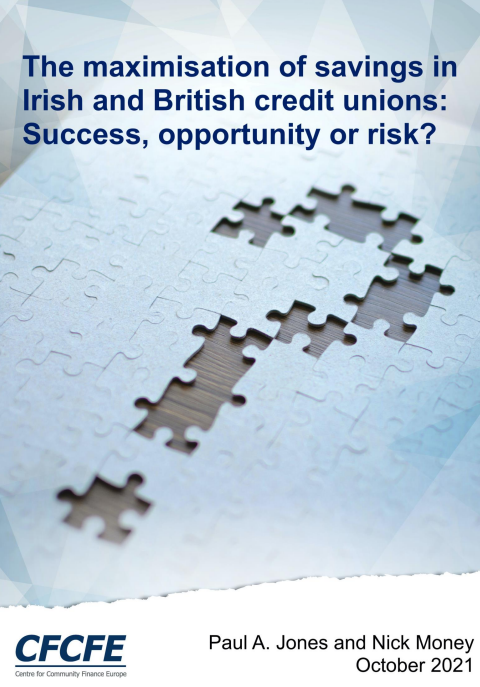
Credit Unions
The maximisation of savings in Irish and British credit unions: Success, opportunity or risk? - Paul A. Jones and Nick Money
October 2021 - Centre for community and finance Europe (CFCFE)
Extract of the Introduction
In recent years, for an increasing number of credit unions, the maximisation of savings has become not so much a success to be celebrated but a concern to be monitored and a risk to be managed. For in these credit unions, the growth in savings has way outstripped loans made, with the result that insufficient income is being generated from lending to maintain the capital-to-asset ratio and to pay a competitive dividend (or interest) on savings. Savings maximisation, rather than stimulating a profitable expansion of the loan book, has instead become a significant cost to the credit union.
This is a particular problem in the Republic of Ireland where credit unions have suffered from a long-standing low loan-to-asset ratio (Swoboda et al. 2017) and are now having to also cope with the impact of negative interest rates on bank deposits. But it is also a reality that is surfacing in some credit unions in Britain. As yet British credit unions do not face negative interest rates but high levels of savings equally impact on capital-to-asset ratios and the ability to pay a dividend (interest). This paper aims to explore the incidence, dynamics, and impact of rising levels of savings on Irish and British credit union stability and operations. It reveals the increasing challenges faced by credit unions in managing savings growth, the actions they are taking in response and further actions that could be taken to ensure long-term credit union viability.
